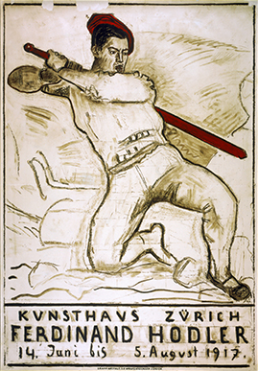The development of lithography laid the foundations for producing colourful, artistic posters cheaply. It elevated the poster to an artform in its own right – one that has continued to evolve to this day.

Based on the principle that oil and water do not mix, lithography was developed at the end of the 18th century. This is how the original process worked:
- An image is drawn directly onto a smooth slab of limestone in pencil or crayon using a greasy ink.
- The limestone is then washed with a water-based acid solution.
- The printing ink is applied and adheres only to the grease-receptive area of the image.
- The image is then printed onto a piece of paper.
Since this process can be repeated with virtually no loss of quality, it allowed artists to work much faster and more directly, reproducing exactly the same printed image over and over again very easily and cheaply. As a result, use of lithography spread rapidly throughout Europe.
Initial scepticism from artists
Artists were not particularly enthusiastic about posters in the early days, believing them to be too commercial. They also disliked having their creativity constrained by the customer’s requirements and so tended not to sign their posters. Some famous artists – Ferdinand Hodler, for example – did design posters, but these were mostly for their own exhibitions.
The first posters by artists: the Art Nouveau movement
In the 1880s, Paris-based artists such as Toulouse-Lautrec and Jules Chéret and Swiss artists including Théophile Alexandre Steinlen and Eugène Grasset discovered the visual impact of the poster and its scope for artistic development.
Their output was instrumental in taking the poster from its purely informative, typewritten origins towards a unique visual style. The Art Nouveau movement’s posters had the following characteristics:
- They were inspired by organic shapes, curved lines and even Japanese woodblock prints.
- They drew the viewer’s gaze from afar with their colourful and lively imagery.
The modern poster was born!
Last modification 07.12.2018
Contact
Swiss National Library
Prints and Drawings Department
Hallwylstrasse 15
3003
Bern
Switzerland
Phone
+41 58 462 89 71





